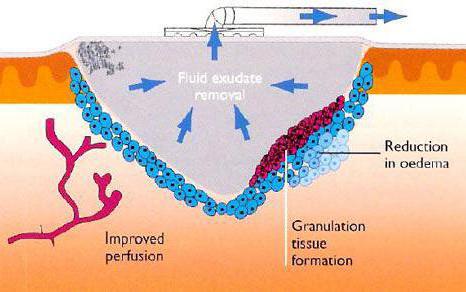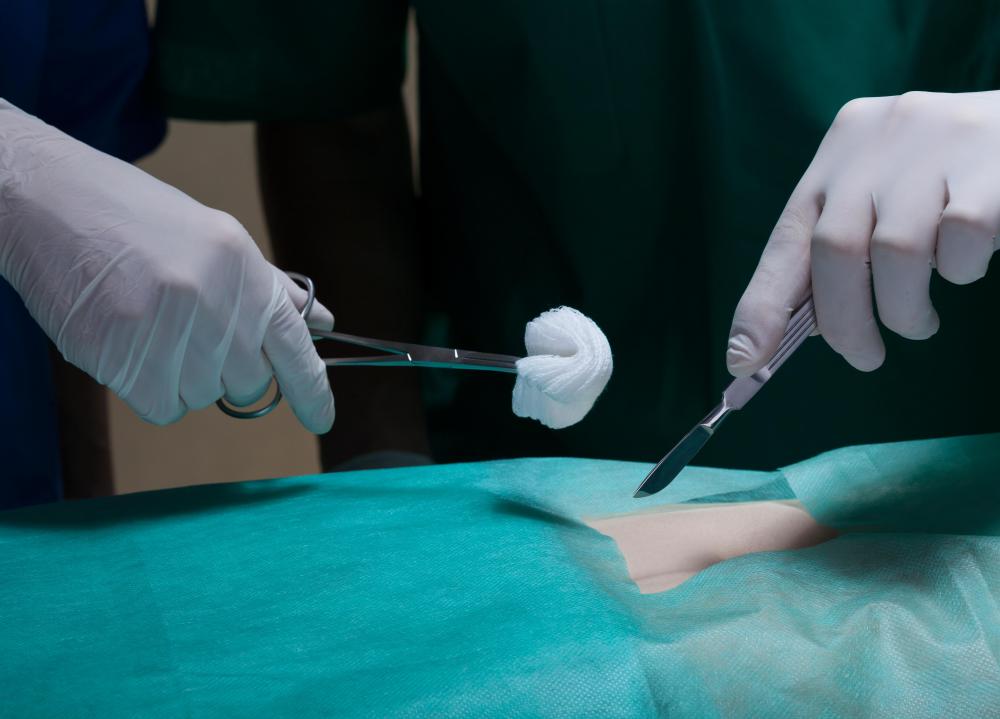At WiseGEEK, we're committed to delivering accurate, trustworthy information. Our expert-authored content is rigorously fact-checked and sourced from credible authorities. Discover how we uphold the highest standards in providing you with reliable knowledge.
How Is a Dehisced Wound Treated?
A dehisced wound is a surgical incision that prematurely bursts open along the suture line. It typically occurs when wound healing is compromised by poor after-care or other preexisting medical conditions. The goal of treatment is to help the wound heal properly and prevent infection from setting in, or treat an existing infection. Treatment may include antibiotics, wound packing, and negative pressure therapy.
Diagnosing the underlying cause behind the dehisced wound can help determine the best course of treatment. While the main goal is controlling infection and healing the wound without further complications, if a secondary condition helped cause the wound in the first place, it will need to be addressed. Aside from poor after care, several other factors can increase the likelihood of developing a dehisced wound, including a poor blood supply to the wound, use of anti-inflammatory medications that inhibit wound healing, and physical stress on the area around the wound. Genetic conditions that prevent normal collagen production can also make wound healing more challenging.

If the dehisced wound is deep, treatment may require packing the wound to help it heal from the inside out. During this treatment, the wound is packed from the deepest layer to the top layer with sterile gauze or special medical materials. The material serves several purposes: it supports the muscle structure around the wound, prevents the wound closing at the top layer while leaving the deeper layers open, and absorbs the fluids in the wound. Depending on the depth of the wound, it can take several weeks to months before it is completely healed, and the packing must be changed every day.

A very severe or deep dehisced wound may require negative pressure wound therapy, also called wound vac therapy. Treatment methods vary depending on the type of equipment used, but the overall method involves creating a tight seal over the wound and using a special machine to provide suction inside the seal. The machine typically needs to be left on all day during each day the treatment is prescribed. A nurse or wound care specialist monitors the treatment and changes the wound vac about three times a week. Total treatment time may take between two and four weeks.

Controlling infection is another important part of dehisced wound treatment. If a bacterial infection is present, antibiotics will most likely be prescribed. The type of medication used depends on the type of infection and the patient’s tolerance to different types of antibiotics. Ensuring adequate nutrition with a diet rich in protein and vitamin C can help hasten wound healing time. In severe cases, especially in dehisced wounds that cause the bowel to protrude through the wound, surgery may be required.
AS FEATURED ON:
AS FEATURED ON:
















Discuss this Article
Post your comments